

Sincerely yours > (your name)드림 or 올림. Phrases - Personal. Korean Phrases and Common Sentences. Greetings in Korean. How many greetings in Korean do you know?
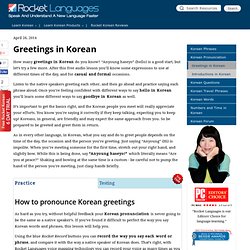
“Anyoung haseyo” (hello) is a good start, but let’s try a few more. After this free audio lesson you’ll know some expressions to use at different times of the day, and for casual and formal occasions. Listen to the native speakers greeting each other, and then go ahead and practice saying each phrase aloud. Once you’re feeling confident with different ways to say hello in Korean you’ll learn some different ways to say goodbye in Korean as well. It’s important to get the basics right, and the Korean people you meet will really appreciate your efforts. As in every other language, in Korean, what you say and do to greet people depends on the time of the day, the occasion and the person you’re greeting. Useful Korean phrases.
A collection of useful phrases in Korean with audio recordings for most of them.
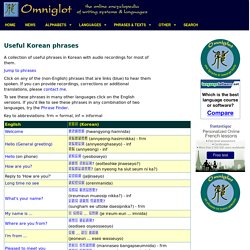
Jump to phrases Click on any of the (non-English) phrases that are links (blue) to hear them spoken. If you can provide recordings, corrections or additional translations, please contact me. To see these phrases in many other languages click on the English versions. If you'd like to see these phrases in any combination of two languages, try the Phrase Finder. Key to abbreviations: frm = formal, inf = informal. Phrases - Business. The Korean Language. This is a very basic introduction to the Korean language.
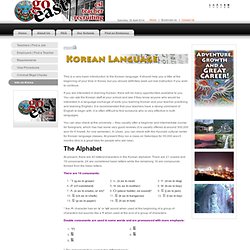
It should help you a little at the beginning of your time in Korea, but you should definitely seek out real instruction if you wish to continue. If you are interested in learning Korean, there will be many opportunities available to you. You can ask the Korean staff at your school and see if they know anyone who would be interested in a language exchange of sorts (you learning Korean and your teacher practicing and learning English). It is recommended that your teachers have a strong command of English to begin with, it is often difficult to find someone who is very effective in both languages.
You can also check at the university -- they usually offer a beginner and intermediate course for foreigners, which has had some very good reviews (it is usually offered at around 300,000 won for 6 hrs/wk, for one semester). The Alphabet At present, there are 40 letters/characters in the Korean alphabet. There are 14 consonants: Common Expressions Said In Korean - Tipskey. In my interpretation, a common or fixed expression in a language is a phrase, clause or short sentence that is frequently used and has minimal or no change of word.
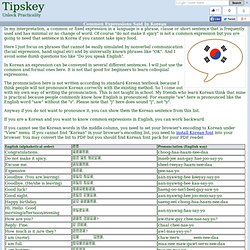
Of course "do not make it spicy" is not a common expression but you are going to need that sentence in Korea if you cannot take spicy food. Here I just focus on phrases that cannot be easily simulated by nonverbal communication (facial expression, hand signal etc) and by universally known phrases like "OK". And I avoid some dumb questions too like "Do you speak English". In Korean an expression can be conveyed in several different sentences.
I will just use the common and formal ones here. The pronunciation here is not written according to standard Korean textbook because I think people will not pronounce Korean correctly with the existing method. Phrases - Personal. Korean. Korean/Lesson I1. Korean Conversation, Level I, Lesson 1: Greetings[edit] Welcome to the first conversation lesson for learning Korean.

By now you should be familiar with hangeul (the Korean writing system) and how to form syllables. If you are not yet familiar with hangeul, see Korean/Alphabet. It is highly recommended that you know these basics before you embark on learning how to make sentences and commencing dialogue. In this first section, we will introduce basic Korean sentence structure, basic vocabulary, and greetings in Korean. 시작할까요? (Shall we start?) Dialogue[edit] The simple dialogue below is between Korean native 찬호 and Joseph (조세프) from America. 찬호: 안녕하십니까, 조세프 씨? 조세프: 예. 찬호: 만나서 반갑습니다. 조세프: 저도요. 찬호: 예. 조세프: 안녕히 계십시오. Overview[edit] The conversation began with 찬호 asking this: 찬호: 안녕하십니까, 조세프 씨? Here, we learn our first bit of Korean. 조세프: 예. Phrases - Personal. How to Say Hello in Korean: 6 Steps. Edit Article Standard "Hello"Other Greetings Edited by Anamika, Cfonseca The standard way of saying “hello” in Korean is “anyoung haseyo,” but there are several variations you should consider using based on how casual or formal the greeting should be.
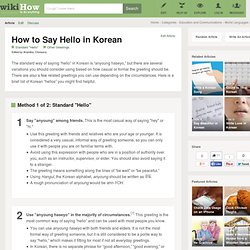
There are also a few related greetings you can use depending on the circumstances. Here is a brief list of Korean “hellos” you might find helpful.